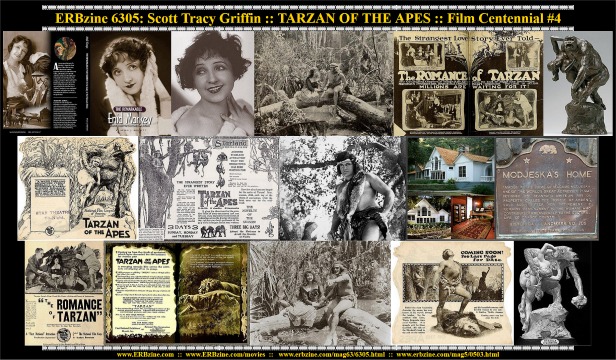
The First and Only Weekly Online Fanzine Devoted to the Life and Works of Edgar Rice Burroughs Since 1996 ~ Over 15,000 Webpages in Archive |

The First and Only Weekly Online Fanzine Devoted to the Life and Works of Edgar Rice Burroughs Since 1996 ~ Over 15,000 Webpages in Archive |
FILM CENTENNIAL CELEBRATION
PART IV
From TARZAN
ON FILM by Scott Tracy Griffin
|
|
|
|
|
![]()

Click for full-size preview collage
![]()
![]()
ERBzine SILVER SCREEN SERIES
www.ERBzine.com/movies
![]()
BACK TO OUR INTRO PAGE FOR
TARZAN OF THE APES (1918)
www.erbzine.com/mag5/0503.html
![]()
![]()
Celebrate the 100th Anniversary
of Tarzan of the Apes in film with
SCOTT TRACY GRIFFIN and his
TARZAN ON FILM
CONTENTS
PART I :: PART
II :: PART III
:: PART IV :: PART
V :: PART VI ::
PART
VII :: PART VIII::
PART
IX
:: PART X
:: PART XI:: PART
XII::
PART XIII::
PART
XIV::
PART XV::
PART
XVI::
PART XVII
::
PART XVIII
:: PART XIX :: PART
XX :: PART
XXI::
PART XXII::
PART
XXIII:
![]()
![]()
![]()
![]()

BILL
HILLMAN
Visit
our thousands of other sites at:
BILL
AND SUE-ON HILLMAN ECLECTIC STUDIO
ERB
Text, ERB Images and Tarzan® are ©Edgar Rice Burroughs, Inc.-
All Rights Reserved.
All
Original Work ©1996-2018 by Bill Hillman and/or Contributing Authors/Owners
No
part of this web site may be reproduced without permission from the respective
owners.